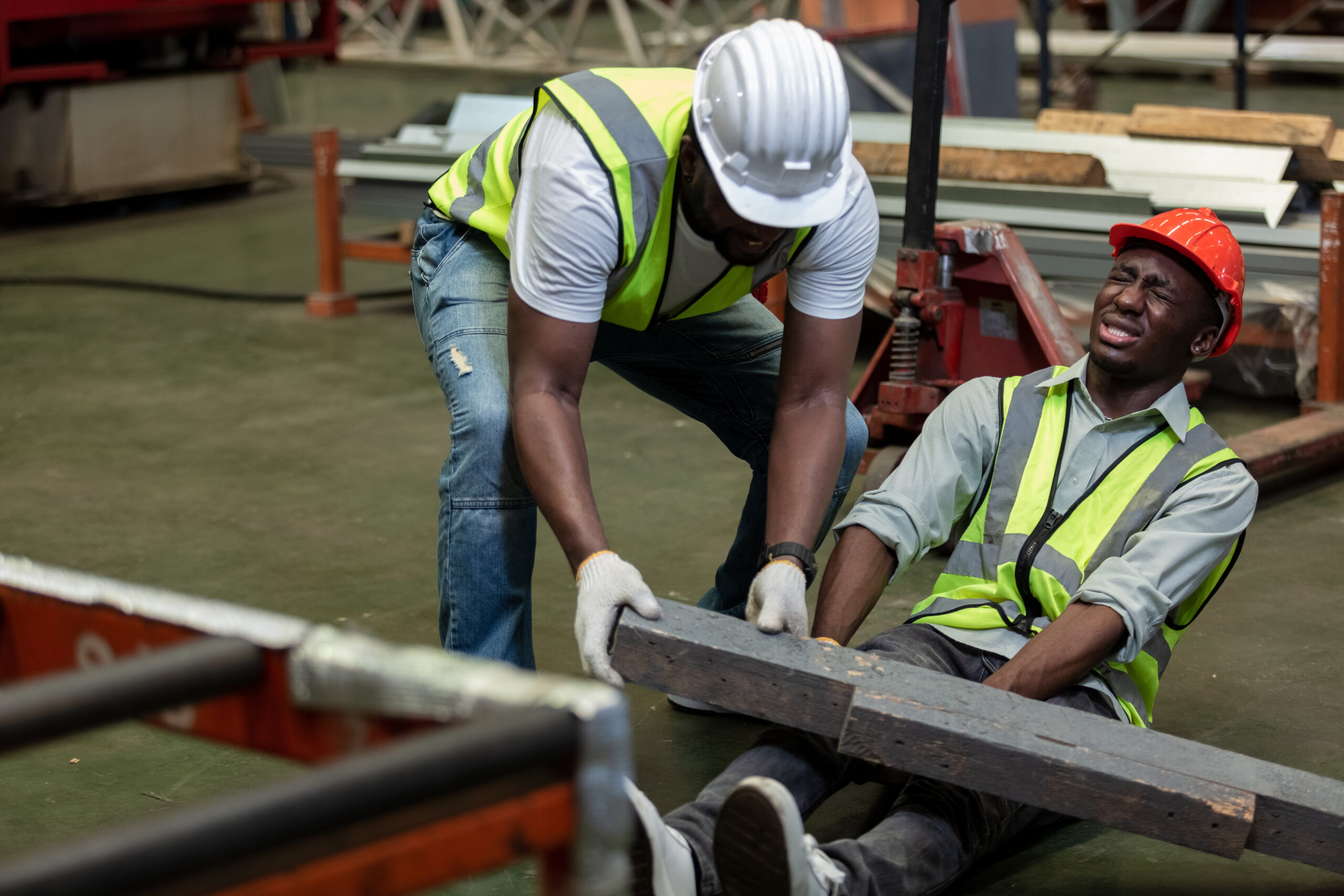Back to Basics: What is a Struck-By Hazard?
January 3, 2025
Understand the different types of struck-by hazards and discover proactive measures you can take to prevent these accidents within the workplace.
Understand the different types of struck-by hazards and discover proactive measures you can take to prevent these accidents within the workplace.

A “struck-by hazard” refers to a potential workplace injury where a worker is hit and injured by a falling, flying, swinging, or rolling object. These injuries are usually due to improper handling of materials or equipment, or a poorly maintained workspace.
A struck-by hazard can happen anywhere. While they occur most frequently in the construction industry, they are more common than one might think. A struck-by hazard occurs frequently in manufacturing, warehousing, logistics, and even some office environments where workers might be hit by falling objects or moving machinery.
The four most common types of struck-by hazards are:
Tools, materials, or debris can fall from different heights, striking workers below. This could be a tool accidentally dropped from scaffolding, a piece of debris falling from a construction site, or a heavy object falling from a shelf due to improper stacking.
To ensure everyone’s safety, it is vital that these objects are properly secured.
Yet not having all objects securely tied down or placed out of harm’s way is not always feasible. Wearing personal protective equipment (PPE) such as hard hats, bump caps, or safety glasses can be instrumental in protecting a worker if they are involved in an incident involving a struck-by falling object.
Flying object hazards exist when something has been thrown, hurled, or propelled across space. It can include instances when a piece of material separates from a tool, machine, or other equipment, striking a worker, and resulting in potentially serious injuries.
Ensuring your employees are trained on using the appropriate guards and shields on power tools, as well as clearing work areas of all debris can help mitigate these types of incidents from occurring on your job site.
This could be an item being mechanically lifted; a heavy, swaying load; or when a worker inside the swing radius of a piece of heavy equipment such as a crane.
Swinging objects can be as simple as a crane operator swinging a load too close to workers below so this hazard could be especially fatal. To help, establish a maximum working range from the anchor point. This precise parameter will be clearly defined and marked, ensuring all employees are well-informed and alert to it.
Injuries caused by rolling objects usually involve a worker being struck by a vehicle or heavy equipment while it’s in motion. Yet it also includes any object that rolls, moves, or slides on the same level as a worker. For example, this could be a pipe or drum on a construction site that is not properly secured and suddenly rolls outside of an intended path, causing impact and potential injury.
Training employees to always be alert and instructing them to stay clear of moving machinery is an excellent strategy for avoiding rolling hazards.
Safety should always be the priority in any workplace. Construction and warehousing industries have more worries than most, but there are easy beginning steps that can help employees stay safe:
Early identification of safety hazards is the best way to ensure the safety of all team members but that is only the start. If you are ready for a more thorough safety review or aren’t sure what hazards your team could be facing, let’s connect.